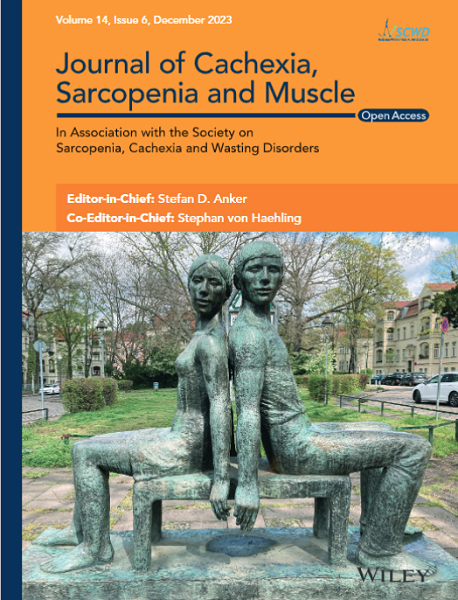Obstructive sleep apnoea (OSA) occurs frequently among individuals with obesity, which is attributed to upper airway muscle dysfunction. Muscle function is regulated by the dynamic balance of the nicotinamide adenine dinucleotide (NAD+) and its reduced form (NADH), which is controlled by the enzyme nicotinamide phosphoribosyltransferase (NAMPT). Elevated NAMPT levels have been found in individuals with obesity. However, the role of NAMPT in obesity-induced muscle impairment has not been fully clarified.
A total of 110 participants (70 moderate-to-severe OSA vs. 40 mild or no OSA) underwent electrical impedance mammography and polysomnography. C57BL/6J mice with high-fat diet-induced obesity (DIO) and control group were utilized for their characterizations, which included forced running wheel tests, glucose tolerance tests, haematoxylin and eosin staining, immunostaining, magnetic resonance imaging, whole-body plethysmography, electromyographic techniques, western blot, NAMPT enzymatic activity assays and NAD+/NADH ratio measurements.
Patients with moderate–severe OSA have a significant decrease in lean mass percentage of upper airway muscles compared with those in controls (p < 0.01). In vivo, a high-fat diet reduced the levels of NAD-dependent deacetylase sirtuin-1 (SIRT1) (p < 0.01), which plays a crucial role in the deacetylation of NAMPT. The reduction in SIRT1-mediated NAMPT deacetylation (p < 0.001) resulted in decreased NAMPT activity (p < 0.01), leading to a decrease in NAD+/NADH ratio (p < 0.05) and decreased the myosin heavy chain isoform (MyHC) I level (p < 0.05), thereby affecting the effectiveness of upper airway muscle and ultimately leading to upper airway collapse (101.0 vs. 81.7 pixels, p = 0.02). The introduction of estradiol mitigated high-fat diet-induced muscle dysfunction by enhancing expression of SIRT1 and inhibiting the acetylation of NAMPT, reducing upper airway collapse (81.7 vs. 96.7 pixels, p = 0.06).
These findings highlight the crucial role of SIRT1-mediated NAMPT deacetylation on obesity-induced muscle dysfunction, suggesting targeting NAMPT has the potential to reverse the obesity induced muscle dysfunction and provide effective treatment options for OSA.



